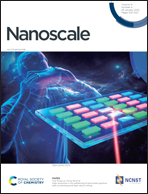Regulating crystallization dynamics and crystal orientation of methylammonium tin iodide enables high-efficiency lead-free perovskite solar cells†
Abstract
Tin (Sn)-based perovskite solar cells (PSCs) have attracted much attention because they are more environmentally friendly than lead-based PSCs. However, the fast crystallization of Sn-based perovskite films and the easy oxidation of Sn2+ to Sn4+ hinder the improvement of their efficiency and stability. In this work, ethylammonium bromide (EABr) was added to methylammonium tin iodide (MASnI3) perovskite precursor solution to regulate the crystallization dynamics and improve the film morphology. The results show that the large EA+ ions slow down the crystallization process of Sn-based perovskites and form a smooth perovskite film with high crystallinity, while the added Br− anions further improved the crystallinity and orientation of the perovskite film. Under the combined action of EA+ and Br− ions, the as-produced PSCs achieved a champion power conversion efficiency (PCE) of 9.59%. The EABr additive also retarded the oxidation of Sn2+, and the solar cell device maintained 93% of its initial efficiency after 30 days in a nitrogen-filled glove box without being encapsulated. This work provides a new strategy for the realization of high-efficiency Sn-based PSCs.



 Please wait while we load your content...
Please wait while we load your content...